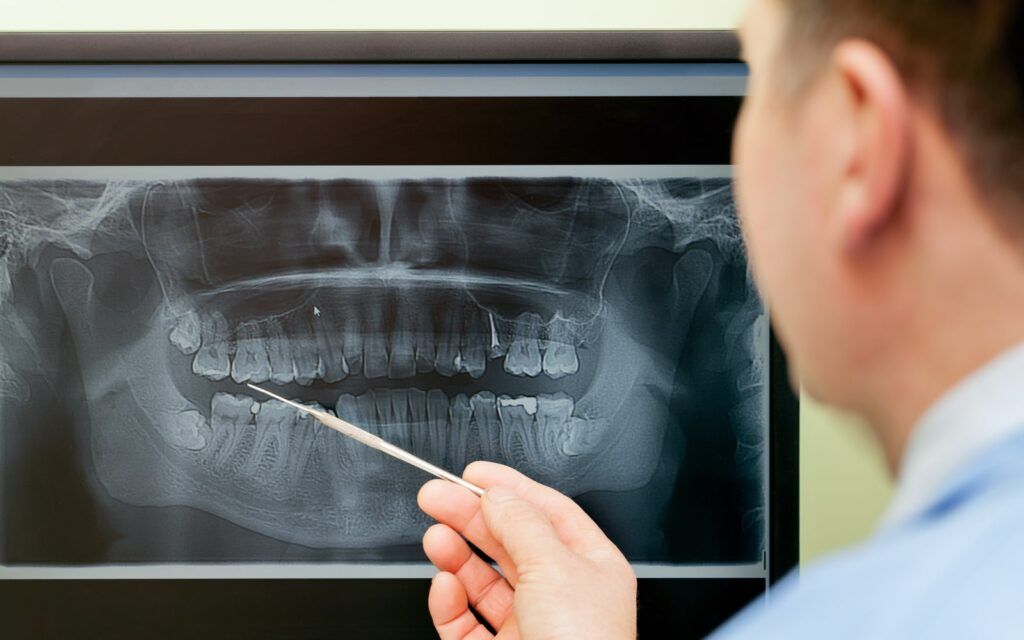Dental emergencies encompass a significant portion of treatment in endodontic practices, as about 85% of most dental emergencies stem from pulpal infection and periapical disease. Endodontic emergencies are pain or swelling caused by inflammation/infection throughout the pulpal and periapical tissues. Patients with these emergencies often require immediate services due to the severity of the infection, the location of swelling, and other factors that relate to the patient’s overall health. Endodontists in these cases often have to act swiftly to diagnose the condition and treat it by understanding the patient’s issues, clinically testing the issue, and then performing treatments to address it.
Overall, we’re here to provide you with an insider’s look into how endodontic emergencies are performed, why it’s recommended to see an endodontist for an emergency, and what treatments are commonly performed to remove infection and relieve pain.
Assessing the Dental Problem Before Treatment
Before any endodontic treatment is provided, the patient’s symptoms need to be diagnosed, as various conditions can affect the overall outcome of the emergency procedure. The patient’s medical history and dental history need to be observed to determine the cause during this time. As endodontists, it’s important to ask questions regarding their pain, when they noticed it, and other questions related to the circumstances of their pain. Through the use of periapical radiographs, periodontal probes, electric pulp testers, and thermal tests, these diagnostic aids will typically allow users to determine if the issue is of endodontic origin.
Many conditions can be identified as an endodontic emergency, and it’s through address the symptoms and issues with tests, these common conditions often occur, including:
- Reversible Pulpitis: pain that occurs due to pulp inflammation, often resulting from failed restorations, untreated cavities, and dental trauma. There is limited inflammation when it’s reversible, and the tooth can be saved by applying a dental filling.
- Irreversible Pulpitis: In irreversible Pulpitis, the pulp has turned necrotic, compromising circulation of blood vessels throughout the root channels and predisposing the tooth to further infection.
- Periapical Abscess: This collection of pus is often caused by an infection that has spread from the tooth to the surrounding tissues. To address the issue, the pus must be drained. n
- Cracked Teeth Syndrome: When a tooth has incompletely cracked, but no part of the tooth has completely broken off. In these cases, the cracks are so small that it’s difficult to detect on normal dental x-rays.
In other aspects of treating these emergencies, any disorders that affect the diagnosis, including myofascial pain, neurological disorders, maxillary sinus disorders, and vascular pain syndromes, need to be considered to help further determine the cause and treatment. While diagnosing pulp pain, all factors related to the person’s age, pain tolerance, and medical history should be considered.
Addressing Pain-Related Issues During Treatment
Not only can some conditions preside before treatment, but once a form of treatment is decided upon, any changes or other sources of pain will also need to be accounted for once treatment begins. At an endodontist’s office, the purpose of endodontic emergency treatment is the minimize conditions that arise and counteract any issues that occur to ultimately remove infection and provide pain relief.
The first line of defense against endodontic emergencies is to perform either a pulpotomy or pulpectomy, with pulpotomies being the preferred choice due to their conservative methods and high success rate. However, these treatments highly depend on whether or not the Pulpitis is reversible or irreversible, as these two conditions ultimately determine the treatment outcome. Emergency pulpotomies often create different results for pain relief when compared to endodontic treatment not performed under emergency circumstances.
Under the best circumstances, an emergency pulpotomy followed by endodontic treatment will create a highly successful outcome. But with the other cases, there can be other issues that ultimately require addressing, including:
- Previous Restorative Treatment: Any previous restorative treatment present will most likely need addressing. Depending on the restoration, your emergency endodontist will need to temporarily correct the issue before scheduling a follow-up appointment.
- Microscopic Fractures: Also known as cracked teeth syndrome, microscopic fractures could be noticed during treatment while performing the pulpotomy or pulpectomy.
- Periodontal Disease Treatment: Any previous periodontal disease treatment, such as scaling and planing, could potentially become reinfected during treatment if performed poorly.
- Chronic Periapical Lesions/Abscess: Also known as phoenix abscesses, these abscesses can form after a root canal treatment, potentially exasperating the issue unless addressed.
- Apical Periodontitis: Any presence of periodontal disease may alter the emergency procedure depending on the condition of the tooth affected.
During any emergency procedure, your endodontist will work to evaluate the overall survivability of the affected tooth. Our goals throughout the procedure are to alleviate pain as much as possible and then further address your dental health through follow-up appointments with endodontic therapy and other treatments. Alternatively, adjunctive therapies can also be applied during the emergency procedure, including post-operative antibiotics, analgesics, and occlusal adjustments.
Post-Endodontic Treatment and Its Risks
After addressing the immediate issues affecting the patient’s teeth, follow-up appointments will be scheduled to assess the treatment’s progress and overall dental health. During this time, potential issues that may arise after treatment can be retreated if needed. During the process, issues with the root filling, potential risk for root fractures, possible microleakage, irritation from the filling material, and overfilling can occur after the procedure. If any of these issues occur and pain hasn’t subsided, it’s essential to speak with your endodontist about addressing these issues and retreating the affected tooth.
It’s important to remember that seeing your general dentist first is an excellent way to get a diagnosis beforehand to make sure that your condition can be treated. If you’re experiencing dental pain, the best place to begin receiving treatment is through your general dentist to help diagnose your condition. If your dentist cannot provide the treatments you need, then find an endodontist who can, and in any case of emergency, call your local endodontist to receive treatment as soon as possible.



